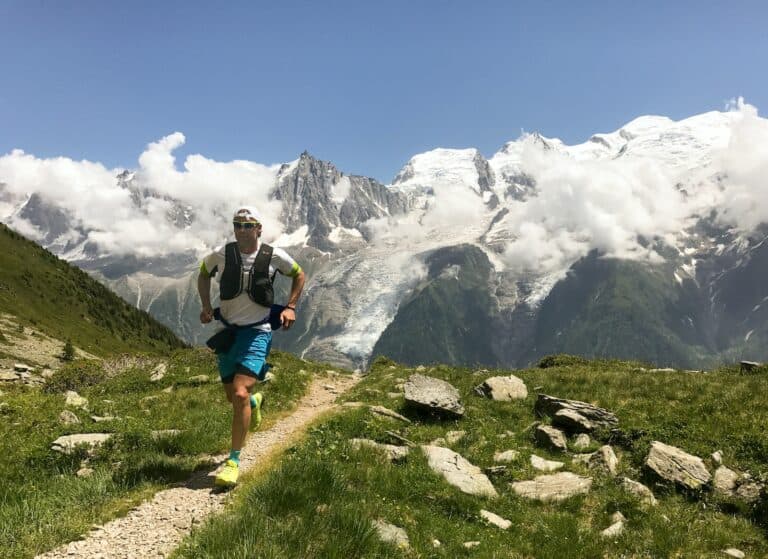When it comes to trail running, it’s not just about having the right gear and terrain; your breathing technique can significantly impact your performance and overall experience. In this comprehensive guide, we will explore various breathing techniques for trail running, delve into the science behind efficient breathing, and provide practical tips to help you breathe properly while running on those challenging trails. So, let’s lace up our shoes and dive into the world of trail running breathing techniques.
The Fundamentals of Trail Running Breathing Techniques

Trail running demands a unique set of skills, and mastering the art of breathing is one of them. The first step is understanding the fundamentals of breathing during your run.
The Science Behind Breathing for Endurance
The relationship between breathing and endurance is profound. The oxygen you intake fuels your muscles and affects your aerobic capacity. Efficient breathing can help you maintain a steady pace and run longer distances.
Diaphragmatic Breathing: Start with diaphragmatic breathing. This technique involves deep breaths that engage your diaphragm and expand your lungs, ensuring efficient oxygen intake. When practiced consistently, it enhances your running performance.
Breathing Patterns: Nose vs. Mouth Breathing
The debate between nose and mouth breathing during exercise has been ongoing. Here’s what you need to know:
- Nasal Breathing: Breathing through your nose filters and humidifies the air, reducing the risk of respiratory issues. It can also help maintain a more efficient breathing pattern. However, it may not provide enough oxygen during high-intensity runs.
- Mouth Breathing: Many runners opt for mouth breathing during intense moments as it allows for faster air intake. However, it can lead to more stress on your respiratory system.
Proper Breathing Techniques: The key is to find a balance. Incorporate both nose and mouth breathing depending on your pace and intensity.
Practical Breathing Techniques for Trail Runners

Now, let’s get practical and explore specific breathing techniques that you can implement during your trail runs.
Belly Breathing
Belly breathing is a fundamental technique for efficient breathing. Here’s how to practice it:
- Stand or sit comfortably, with your knees bent.
- Place one hand on your chest and the other on your belly.
- Inhale deeply through your nose, allowing your abdomen to rise.
- Exhale slowly through your mouth, feeling your belly fall.
Rhythmic Breathing Technique: Combine belly breathing with a rhythmic breathing pattern. For example, inhale for three steps and exhale for two steps. Adjust this pattern as needed.
Integrating Breathing Techniques into Your Trail Running Routine
To see real improvement in your endurance and comfort, it’s essential to integrate these techniques into your running routine.
Training Plan for Improved Breathing
- Start with interval training. This helps you understand how different paces affect your breathing.
- Use a heart rate monitor to track your progress and set goals for maintaining specific heart rate zones.
Common Mistakes in Breathing Techniques
Even if you’ve learned and practiced various breathing techniques for trail running, it’s essential to be aware of common mistakes that many runners make. These mistakes can hinder your progress and impact your overall performance. One such mistake is Chest Breathing versus Deep Breathing.
Chest Breathing
Chest breathing is a habit that many people develop naturally, especially when they are not paying attention to their breath. It involves taking shallow breaths primarily from the chest, where the upper part of the lungs is doing most of the work. This type of breathing can limit your lung capacity because you’re not fully utilizing the entire capacity of your lungs.
Deep Breathing
On the other hand, deep breathing, also known as diaphragmatic breathing, is a technique where you engage your diaphragm—a muscle located just below your lungs. Deep breaths involve the expansion of your diaphragm and lower part of your lungs, allowing you to take in more oxygen with each breath. This enhanced oxygen intake is crucial for energy production and endurance during running.
Avoiding Chest Breathing
To avoid chest breathing and make the most of your breathing for trail running, it’s important to consciously engage your diaphragm during every breath. Here’s how to do it:
- Awareness: Start by being aware of your breathing pattern. Pay attention to whether you tend to breathe shallowly from your chest.
- Practice Diaphragmatic Breathing: When you inhale, focus on allowing your abdomen to expand. This means that when you take a deep breath in, your diaphragm should push downward, and your belly should rise. It may feel unusual at first, especially if you’re used to chest breathing, but with practice, it will become more natural.
- Exhalation: Exhale slowly and completely, allowing your belly to fall as you expel the air.
- Incorporate It Into Your Runs: During your trail runs, remind yourself to engage your diaphragm and take deep breaths. It might be helpful to use a rhythmic breathing pattern as mentioned earlier, where you inhale for a specific number of steps and exhale for another.
The Mind-Body Connection in Trail Running

Breathing is not just a physical activity; it’s also a mental one. The way you breathe can impact your mental state and overall performance.
Breathing and the Brain
When you breathe deeply and efficiently, your brain receives more oxygen, reducing the feeling of fatigue. It also helps you stay focused and positive during your run.
Breathing Gear and Accessories
While the focus is on techniques, having the right gear and accessories can enhance your breathing experience.
Nasal Strips
Nasal strips can aid in nasal breathing by ensuring your nostrils remain open, making it easier to breathe through your nose.
Running with a Pace Group
Running with a pace group can help you maintain a consistent breathing pattern and pace, ensuring you don’t push yourself too hard.
Final Thoughts: Breathing Techniques for Trail Running
Mastering the art of breathing during trail running is a journey that can significantly impact your performance. By practicing these breathing techniques, understanding the science behind efficient breathing, and avoiding common mistakes, you can improve your endurance and overall comfort. Remember, it’s not just about your legs and lungs; your breath is your constant companion on the trail.
